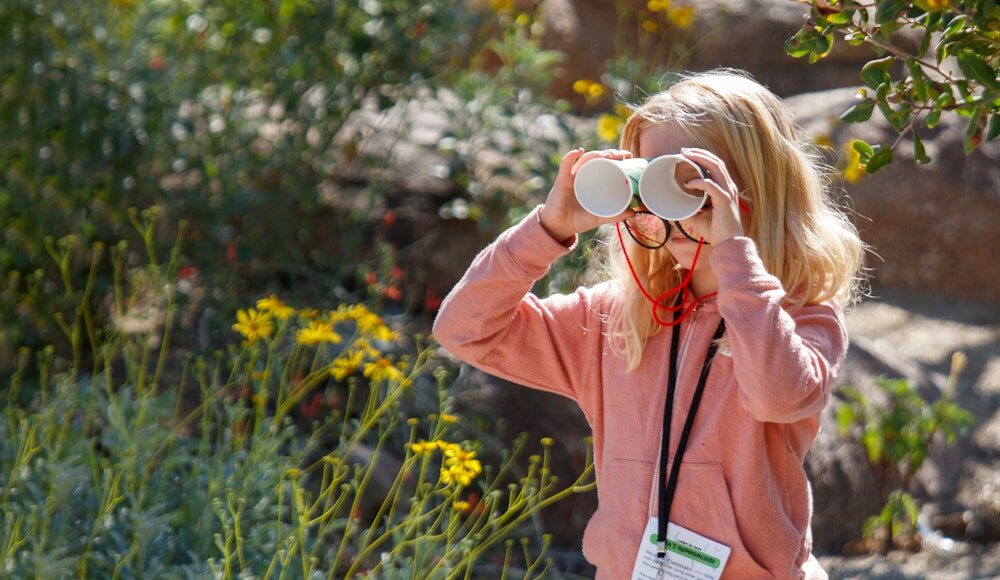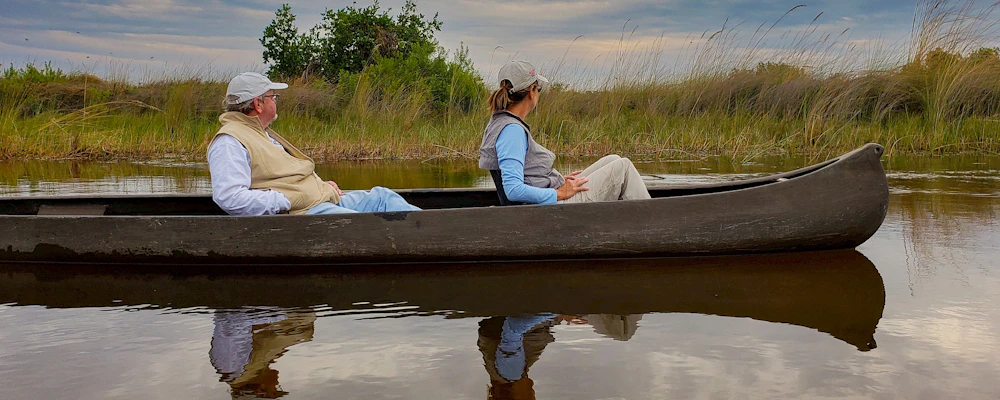East Africa and Madagascar Gardens
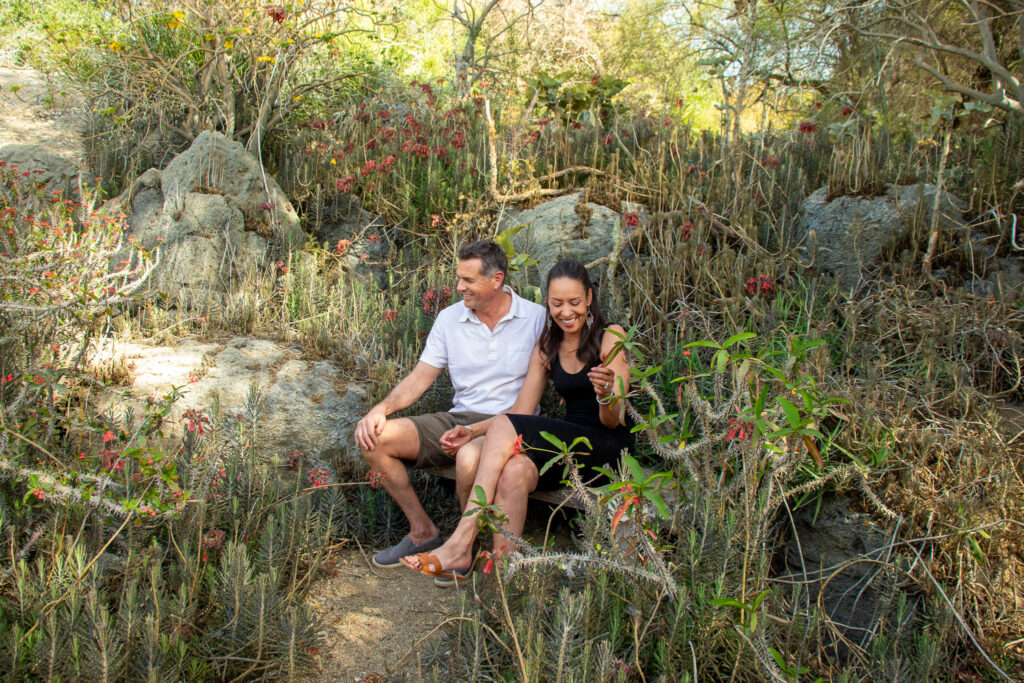
Explore plants from the Horn of Africa and the thorn forests of southwest Madagascar. Acacia, Commiphora, and Boswellia (frankincense) are typical trees found in East Africa and with 150 million years of separation from Africa, the island of Madagascar has many plant species that occur nowhere else on Earth.
Madagascar Ocotillo
Though not closely related to the Sonoran Desert’s ocotillo, its similarly commanding and towering stems covered in small dark green leaves make it a popular vertical element in desert landscape…
Gum Arabic Tree
A widespread African tree, its hardened sap is widely used in the food, pharmaceutical, art, cosmetic, and textile industries.
Candelabra Tree
The Candelabra tree is a succulent tree-like euphorbia species native from northern South Africa to Kenya where it inhabits dry areas and grasslands. It grows up to 20 feet tall or more and produces many branches giving it a candelabra-like structure. Its inconspicuous flowers provide nectar for butterflies and bees and its seeds are eaten by birds. It produces highly toxic milky latex sap that can cause blindness, skin irritation, and poisoning if ingested. Its stems have been used as fish poison, but the candelabra tree also has purported medical uses and its light wood has been used for doors, planks, and boat construction.
Baobab
Living up to 2,000 years old, this iconic tree is considered one of the largest succulent plant species in the world. It rarely reaches 75 feet tall, but its trunk can reach up to 80 feet in circumference where it specializes in water storage. Sometime considered grotesque, when its leaves have dropped the tree’s branches resemble a giant root system, giving the appearance that the tree is growing upside-down. Baobab trees are an important resource for people and animals. Hollow trunked trees have provided people with shelter for centuries. The spongy wood, leaves, flowers, and fruit provide food for many animal species including elephants and baboons.
Umbrella Thorn
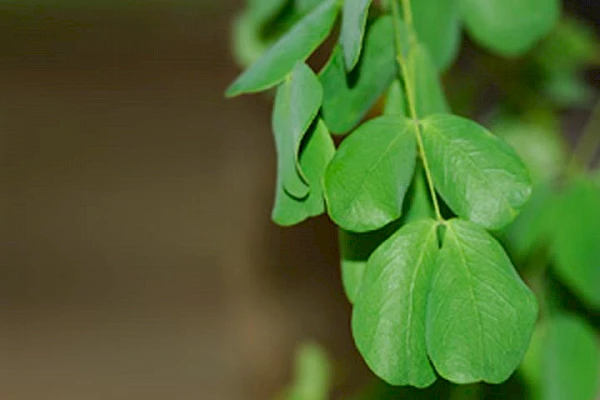
Kokerboom, Quiver Tree
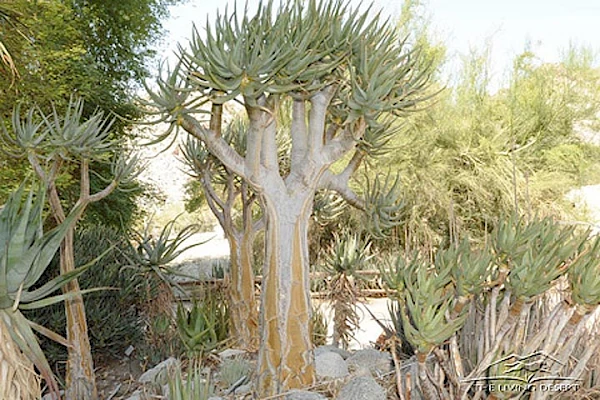
Quiver tree is a distinctive tree aloe with a thick, smooth light-brown colored trunk and blue-green leaves at the tips of its forked branches. Quiver trees live up to 80 years and can reach heights up to 21 feet. Its tubular canary-yellow flowers appear in the winter months and provide food for nectar feeding sugarbirds. Weaverbirds often build nests in the branches of Quiver trees where young are afforded protection from predators. Quiver trees’ natural habitat lies in arid, rocky areas in northwest South Africa and Namibia. The indigenous San people would hollow out the tubular branches to form quivers for their arrows.
African Ocotillo
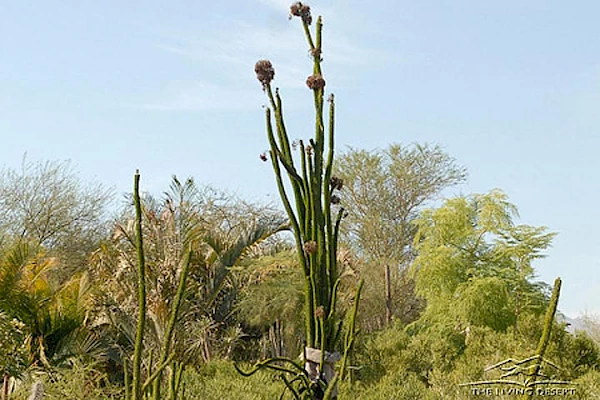
Clusters of tiny white flowers are borne at the tip of the spine-covered stems on separate male and female plants.
Dwarf Mongoose
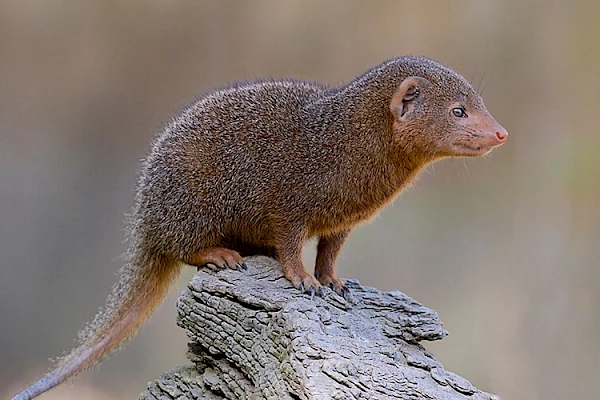
Dwarf mongoose are the smallest of the 34 mongoose species. They are highly social animals that form packs of 12-30 individuals.
Mongoose are very territorial, with an alpha female leading the pack.
They are omnivores, eating mostly arthropods and small vertebrates and eggs. They forage for food in packs, but each individual catches its own food.
